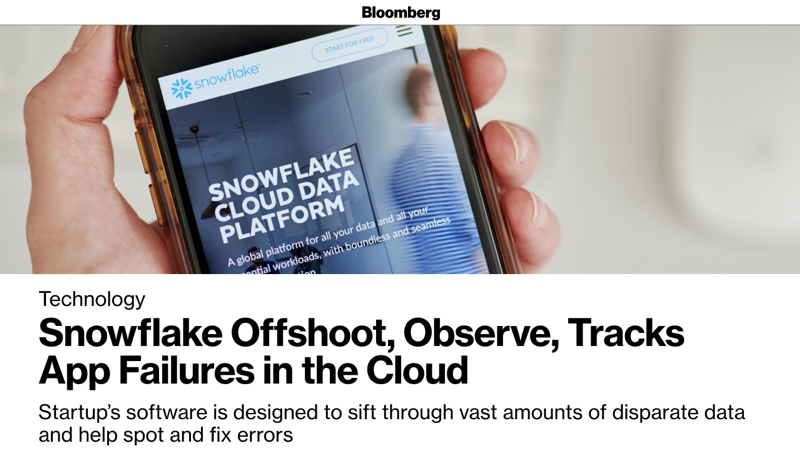Observe In The Press
After our launch last week, a number of articles were published discussing Observe’s market opportunity and technical capabilities. Here’s a quick recap of the highlights.

The first story to break was by Dina Bass at Bloomberg News and was framed around the recent Snowflake IPO and the “mini-Snowflakes” that have started to emerge.
Bloomberg highlights Observe’s data-centric approach to observability – as Stephen Elliot at IDC so eloquently states, “Enterprise customers want to connect logs, traces, metrics, in a single unified model”
Observe chose Snowflake because it handles unstructured log and trace events as well as time-series metrics – no other commercial database does this. In addition, Snowflake is based on a modern cloud architecture that scales elastically and allows massive volumes of data to be ingested.
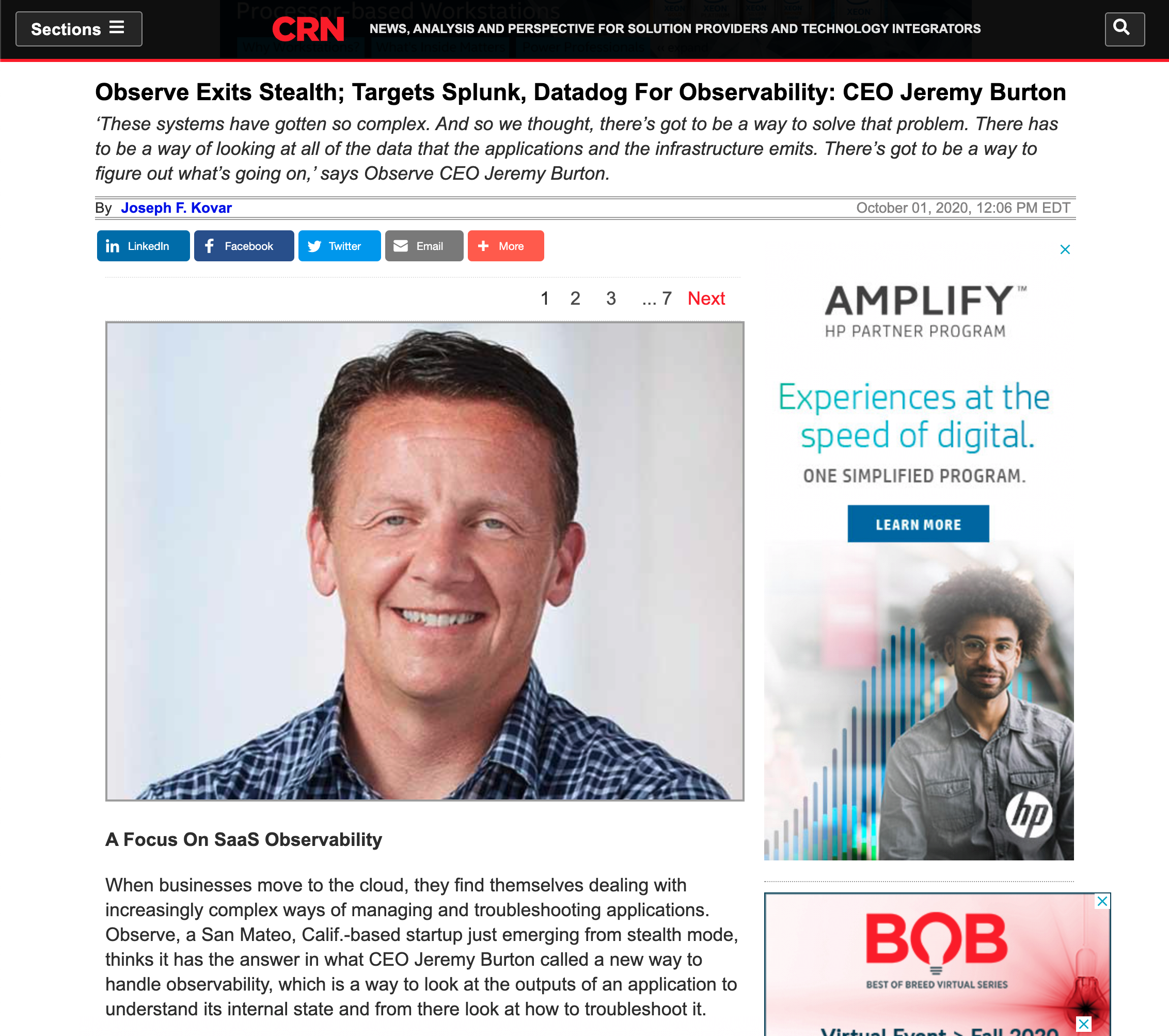
CRN’s Joe Kovar published a more detailed story that clearly defines Observability as “a way to look at the outputs of an application to understand its internal state” and then goes into more detail about the product itself.
CRN highlights the founding thesis of the company as simply “Bring all the data together” and storing it in Snowflake, where it can be shaped, and related.
Relating data is critical because “if a user calls with an issue, that’s going to raise maybe a Zendesk ticket, and that Zendesk ticket is going to be related to maybe some Java or Ruby code, and that Java or Ruby code may be accessing a MongoDB database, and the Java code and MongoDB be may be running on Kubernetes, which may be running on AWS”
SiliconANGLE’s Mike Wheatley summarized our approach to observability and our belief that “observability is fundamentally a data problem.”
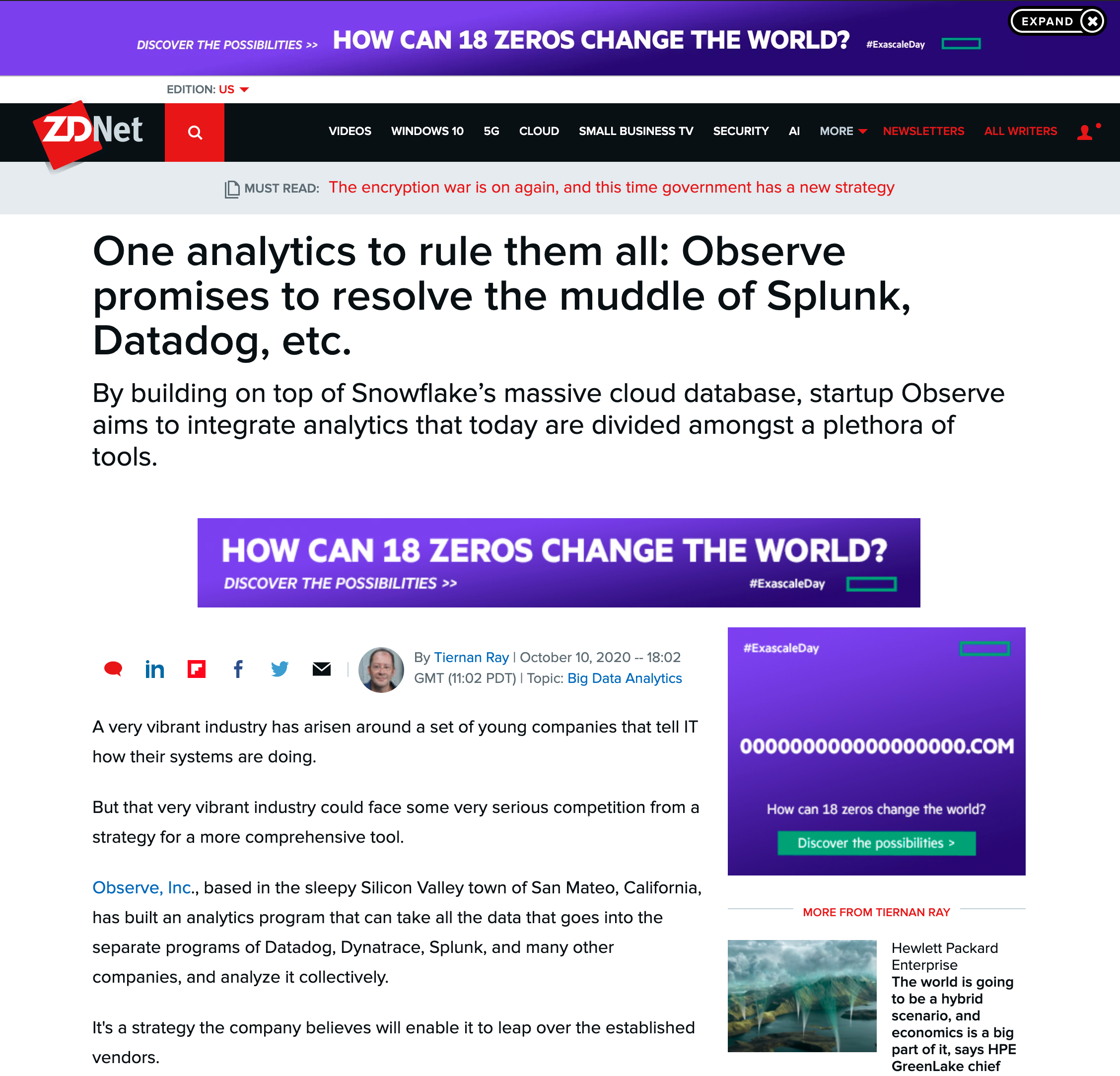
Tiernan Ray at ZDNet led with the “muddle of Splunk, Datadog, etc.” and highlighted Observe’s goal to “integrate analytics that today are divided amongst a plethora of tools”.
The story tracks Observability back to the 1960s and an inventor called Rudolph Kalman – even citing his original paper on the topic!
And on the topic of using multiple different tools to troubleshoot issues, the problems are clear … “the best job in America is writing software, the second-best is fixing it”. The story finishes with a succinct examination of how incumbent vendors will respond to Observe and what their challenges are.
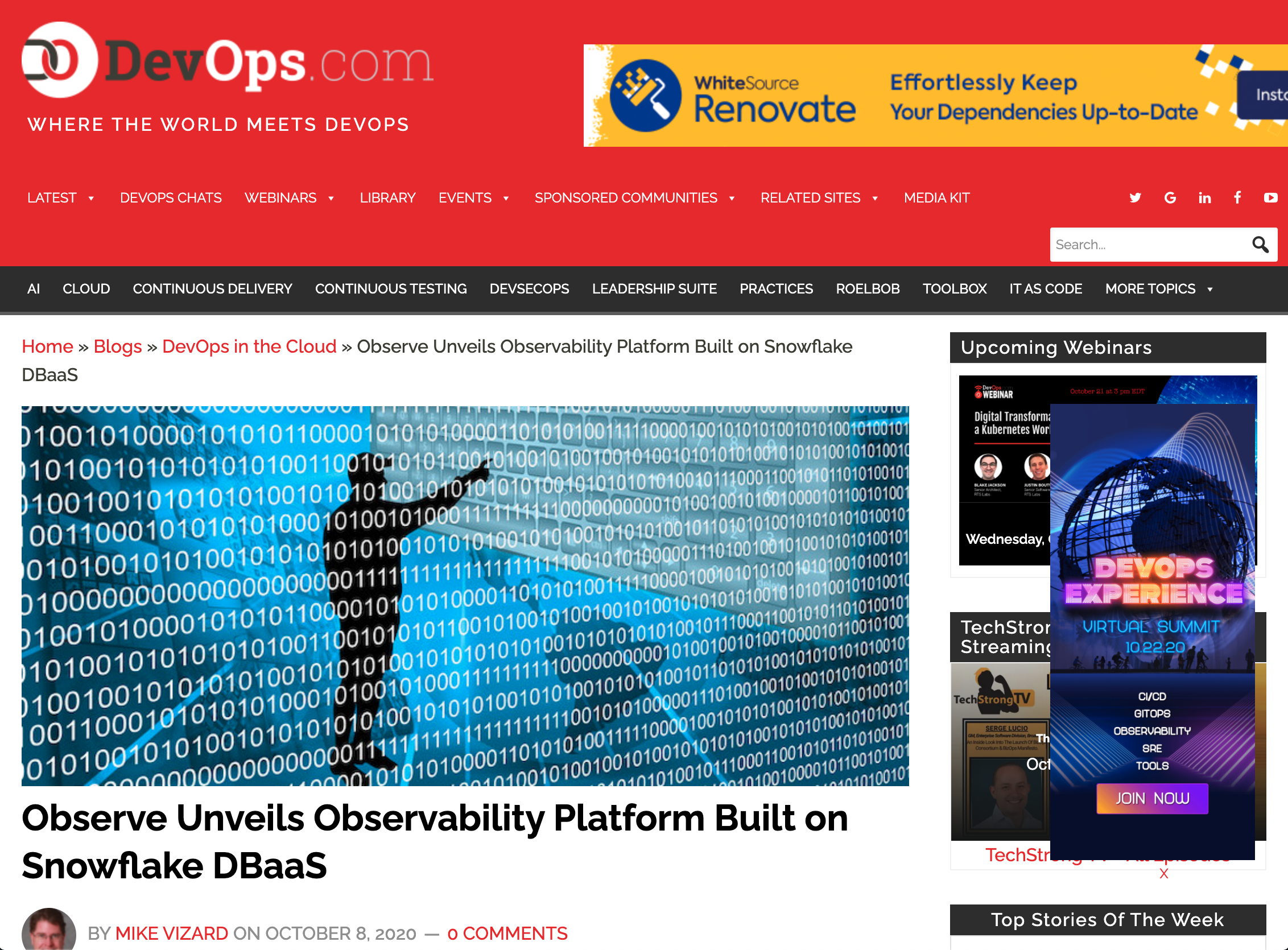
Mike Vizard at DevOps.com published a couple of articles, the first is an overview of Observe and the Observability market.
Vizard highlights the connection between Observe and Snowflake as the key way to consolidate log, metrics, and tracing data.
He also highlights some of the key concepts behind the product, like Resources – “The context is achieved by creating a “resource” to represent, for example, a user, a session, a shopping cart, a pod, a container, a help-desk ticket or a build.”
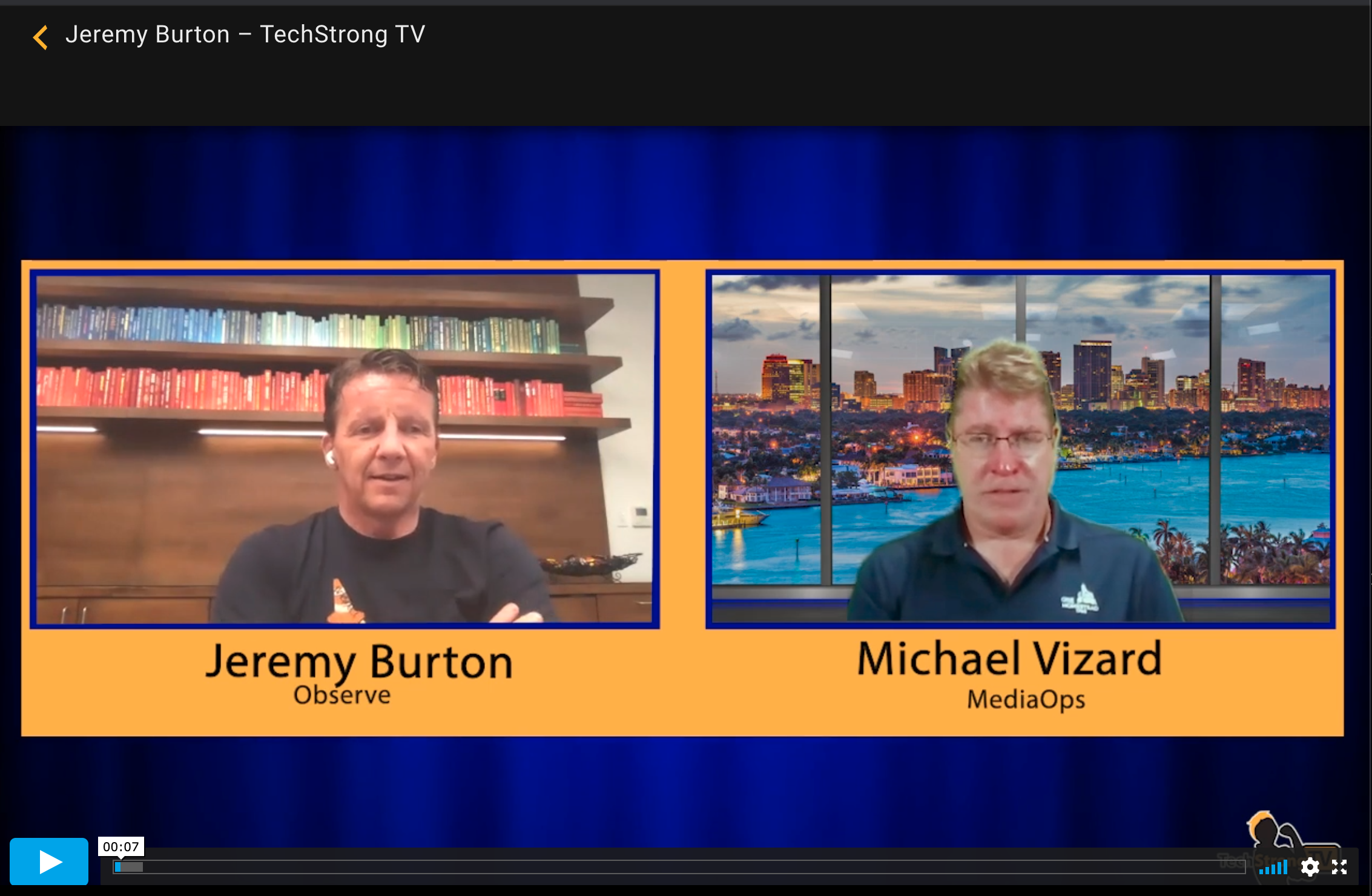
Wrapping up, Vizard comments on the “fierce” competition in the space and acknowledges that vendors are battling for a prize “measured in billions of dollars”.
In his second article, on techstrong.tv, Vizard tracks the evolution of the market for monitoring through to what we know today as observability.
The story also looks at the market drivers and technical capabilities required to be successful.
To complement these news stories, we’ve started to publish our insights on Observe to our Company Blog. Our head of engineering and co-founder, Jacob Leverich, starts with a three-part post on the story behind Observe.
